MYSTERY BITES: Insect and Non-Insect Causes
ENTFACT-649 - MYSTERY BITES: Insect and Non-Insect Causes | Download PDF
by Michael F. Potter, Extension Entomologist
University of Kentucky College of Agriculture
Nearly everyone experiences what seem like bug bites from time to time. The irritation might be accompanied by welts, rash, itching, or perhaps the feeling that something is crawling over the skin. Even when no bugs are apparent, the annoyance can be enough to trigger a call to an exterminator. Unfortunately, pesticides might not be the answer. Unless the underlying cause is discovered, the discomfort will likely continue.
It is important to realize that there are many causes of bite-like reactions — some of which are related to pests, and others that are not. Pest management professionals can usually provide relief if insects or mites are the culprit. If no pests are found, the customer may need to see a dermatologist or other allied professional. The following information is intended to help those who believe they have a biting pest problem where the source of irritation has not been identified.
STARTING THE INVESTIGATION
The cause of perceived ‘bug-bites’ is often far from obvious. Investigations should be thoughtful and systematic, ruling out likely possibilities through the process of elimination. A good rule of thumb in such cases is that no pesticide should be applied unless biting pests or clear evidence of them are discovered or strongly suspected. A thorough investigation is more likely to yield a solution.
Treating without a known target pest can mislead the client into thinking that spraying will fix the problem, which it seldom does. Additional (unnecessary) treatments may be requested thereafter whenever someone complains of an itch.
To conduct a careful investigation, it is useful to interview the client before inspecting the premises. In commercial settings such as an office building, this may involve talking with management as well as affected employees. A questionnaire (see the bottom of this page for the questionnaire, or view this downloadable PDF version) can be helpful for gathering facts that may solve the mystery. One of the most important questions to ask is if anyone has actually seen or captured any bugs as the irritation is occurring. With a few notable exceptions (e.g., bed bugs, certain types of mites), most pests that bite humans are likely to be seen as the irritation is felt. It’s also important to consider the pattern of bites within the building – e.g. are several people affected or just a few? Where are incidents being reported? Is there an association between the onset of symptoms and certain maintenance activities, such as the installation of new carpet, or work on the heating and cooling system? Have there been birds, bats, rodents, or other animals that could possibly be harboring parasites? Such questions can yield important clues worthy of further investigation.
THE INSPECTION
Mystery bite investigations differ from most other pest inspections because the ‘culprit’ is unknown. The list of potential irritants is long and many fall outside the realm of pest control. Inspections should initially seek to determine if biting pests are involved. If they are not, customers may still want to know about other factors that may be causing the discomfort.
During the investigation, various specimens could require identification. Those that are small will require magnification to see clearly. Ideally, specimens should be placed in non-crushable containers instead of in envelopes or under tape. Another method of capture is to install several glue traps at locations where bites have been reported. Although such traps are not always reliable, they are another potential tool that could help determine if biting pests are present.

Fig. 2: Glue traps can help to reveal pests capable of causing irritation.
Persons complaining of invisible mites or insects crawling over their skin are sometimes advised to place strips of clear cellophane tape over the affected area while the sensations are occurring. Unfortunately, this seldom reveals the cause of a mystery bite problem. Neither does collecting samples from carpet and floors with a vacuum. Industrial hygienists may use suction devices for collecting fibers and air-borne contaminants, but vacuuming by householders seldom reveals biting pests and samples are tedious to sort through and process. The appearance of bites or welts on the body can also provide clues, although ‘bug bites’ are difficult to diagnose, even by physicians.
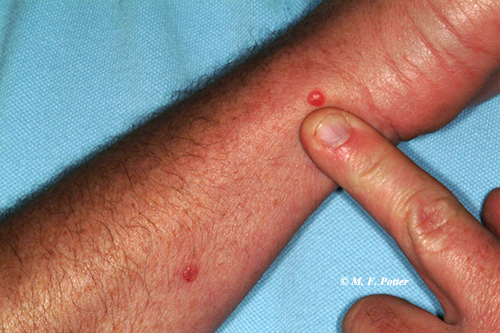
Fig. 3: ‘Bug bites’ are difficult to diagnose, even by physicians.
The most useful tactic for these cases is knowing where and what to look for. With mystery bites, the list of potential irritants is extensive.
SOURCES OF IRRITATION
Irritations of unknown origin may be from arthropods (insects or mites) or a multitude of other factors which have nothing to do with pests. Below are the more common sources worthy of consideration.
Obscure Biting Pests
In some mystery bite cases, insects or mites truly are the culprit. These are some that should be foremost in the minds of inspectors.
Bed bugs have become increasingly common and should always be considered a possibility in mystery bite investigations. People are usually bitten at night while they are sleeping. Initially the bite is painless and victims seldom know they are being bitten. The typical reaction is itchy red welts on exposed skin appearing within a day or so of the incident – although there can be a delayed reaction over a matter of days in some cases. Others have little or no reaction to the bites. Since bed bugs also remain well-hidden, victims often are bitten repeatedly yet never see an insect. Confirmation requires finding the bugs, shed skins or dark fecal spots of digested blood, which can be difficult especially in the early stages of infestation.
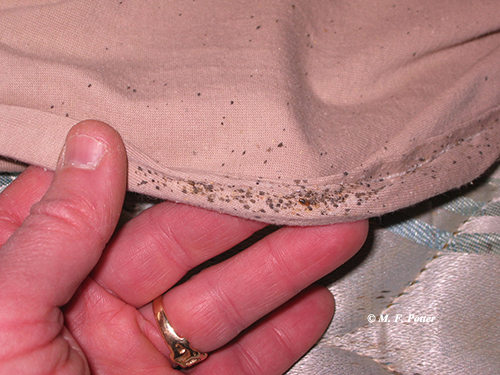
Fig. 4: Bed bugs should always be considered a possibility in mystery bite investigations.
Because bed bugs are cryptic and nocturnal, visual inspection alone sometimes fails to reveal their presence. Various devices are available to help detect their presence. Among the most popular detection methods are small plastic dishes (e.g. ClimbUp®), that wandering bed bugs crawl or fall into but cannot escape due to the slippery inner surface. Typically, the devices are placed under the legs of beds and seating, or close by.
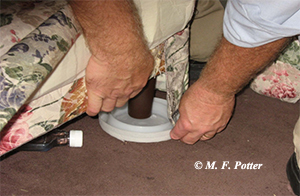
Fig. 5: Dish-shaped traps can be placed under beds and sofas to help monitor for bed bugs.
When bed bug-like insects are found, it is important to consider whether bats, birds or other wild hosts are involved. Although similar in appearance to the kind of bed bug that prefers humans, bat bugs and bird bugs require different management procedures.
Fleas are another common source of insect bites within homes. Fleas are fast moving and jump when disturbed. However, because they are brownish and about 1/8" long, they are usually noticed. Bites typically occur around the lower legs and ankles, producing a small, red, hardened, itchy welt. Fleas are most often associated with pets, although the presence of mice, rats, squirrels, skunks, possums or raccoons can also result in infestations. Animal hosts need to be present for extended periods for fleas to become established — a brief visit by a dog or cat, for example, is unlikely to cause problems. Infestations can be confirmed by examining pets, installing traps (e.g., myFleaTrap®), or walking the premises in white socks pulled high (which makes the presence of the pests more obvious).
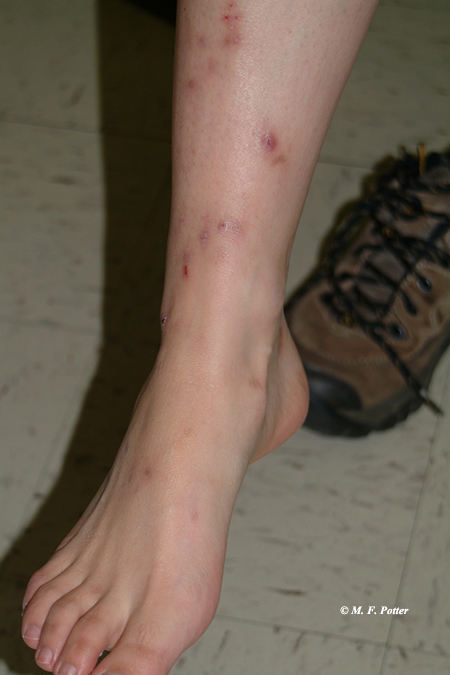
Fig. 6: Fleas generally bite low on the leg, whereas bed bugs attack any exposed skin.
Lice are another possible source of itching and irritation. Infestations occur on the head and other hairy areas of the body. Lice are tiny, whitish-grey insects that are visible under close examination by the client or physician. Because they largely remain on the host, treatment of premises is not required nor is it recommended. The types of lice that bite humans are mainly acquired through close personal contact or sharing of hats or combs.
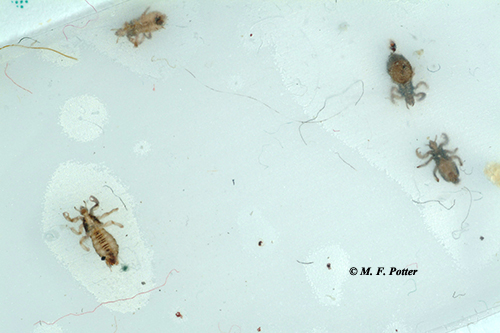
Fig. 7: Lice cause itching and irritation but are easy to diagnose.
Mites are tiny pests that occasionally bite and irritate people. Some feed on animals, others infest stored foods, and some dwell outdoors in vegetation. Contrary to popular belief, most mites that bite people in buildings are large enough to be seen with the naked eye. There also is no such thing as a ‘cable’, ‘computer’ or ‘paper’ mite — these terms are purely fictitious. Mite infestations in buildings can result from birds nesting in eaves, attics, etc., or from mice or rats. When a bird or rodent dies or leaves the nest, thousands of parasitic mites can migrate indoors and bite humans. Domestic fowl (chickens, parakeets, etc.), gerbils and hamsters also may harbor mites capable of biting people. Bird and rodent mites are tiny, but appear as dark slow-moving specks — they are about the size of a period. Mites cannot jump or fly.
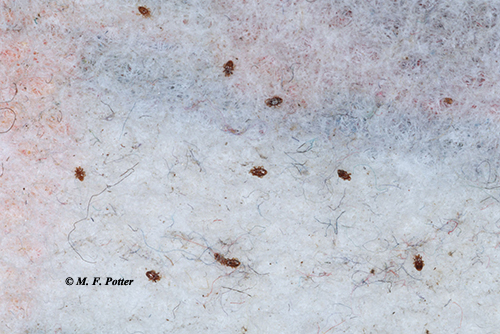
Fig. 8: Mites infesting birds and other animals sometimes also bite people.
A few parasitic mites are too small to be seen with the naked eye. The human scabies mite burrows into the skin, causing intense itching accompanied by a rash. Skin between fingers, wrists, elbows and shoulder blades are areas most often affected. Transmission of scabies mites occurs only through close personal contact or sharing the same bed. Fortunately, scabies is a rather rare condition that is readily diagnosed by dermatologists and other competent physicians. No treatment of the premises is needed since these mites cannot survive off a human.
Various mites living indoors also infest stored food products such as grains, meats, cheese and dried fruit. Food and mold mites tend to infest items stored for long periods that have become moist or moldy. Tremendous numbers may develop in such places as pet food bags, non-refrigerated smoked meats, or caged animal litter. At times populations may disperse outward from breeding sites and annoy humans. Food and mold mites do not suck blood but can irritate the skin. They appear as tiny, pale-colored slow-moving specs on dark surfaces.
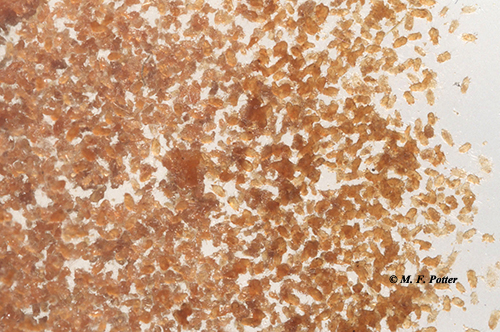
Fig. 9: Mites infesting a bag of pet food.
Other mites that can bite humans live outdoors in vegetation. Chiggers (the immature stage of the harvest mite) live in tall weeds and dense vegetation. They crawl onto people and often attach where clothing fits tightly, such as around ankles, waist or armpits. Chigger bites produce hard red welts that begin itching intensely within 24 hours. Consequently, people may not associate the irritation with being bitten outdoors the day before.
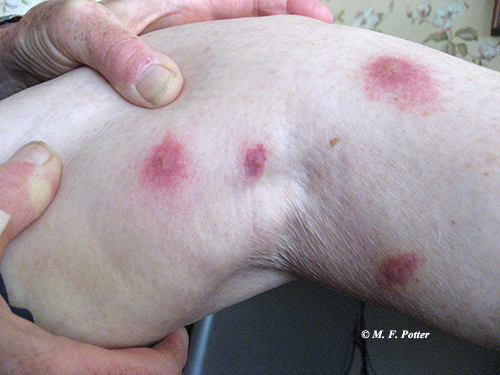
Fig. 10: Chigger bites produce hardened welts that itch intensely.
Another nearly microscopic biter, the straw itch mite, infests straw, grain or hay. Severe rash and itching results from handling infested materials in barns, stables, etc. Yet another type of itch mite inhabits the leaf galls of oak trees. In late summer or autumn, tremendous numbers of the mites can become airborne, landing on people. The bites are red, itchy, and painful, appearing on the face, neck, chest and arms. Fortunately, outbreaks of this mite are sporadic and have been reported mainly in the Midwest. Itch mites may be the culprit if the victim was outdoors near oak trees. Like chigger bites, the irritation may not be felt until the following day. Delayed reaction to bites is also common with ticks and mosquitoes, and from exposure to poison ivy/oak. Asking clients if they have spent time outdoors can help determine if such pests might be involved.
One additional mite worth mentioning is the house dust mite. Dust mites are common indoors where they feed on dander (bits of shed skin) from people and pets. Large numbers may persist in beds, couches and carpet, but are generally too small to be seen with the naked eye. People sometimes think dust mites are capable of causing itching and bite-like reactions but this is untrue. Their annoyance is limited to an ability to cause allergies, with symptoms such as stuffy or runny nose, sneezing, cough, watery eyes and asthma. Diagnostic kits for detecting house dust mites can be bought from pharmacies and allergy testing can be performed by a physician.
Thrips are tiny (1/16") straw-colored insects that feed on plants. They have piercing mouthparts for sucking plant juices but can also bite humans. The bite feels like a pinprick. In late summer, huge numbers of these insects may become airborne, landing on people’s clothing and skin. Some also may be transported on air currents into factories, warehouses, etc. Although houseplants are seldom the source for these or other biting pests, they are still worth checking during inspections.
Sand flies, also called biting gnats, punkies or no-see-ums, breed in swamps, marshes and other moist areas outdoors. They are vicious biters yet so small (1/32"- 1/8") that their presence often goes unnoticed. Fortunately, biting flies seldom breed indoors. Several other tiny flies which are harmless (e.g., fungus gnats) do occur indoors, however, and will need to be identified to alleviate client concerns.
Spiders are often thought to be responsible for bites of unknown origin. In truth, most spiders are harmless, timid creatures and bites are a rare event. When spider bites do occur, it usually is in response to being crushed or threatened; they do not ‘pounce’ on a person as they would a fly. As with other potential biters, it is extremely difficult to diagnose a spider bite from the lesion alone. Lacking an actual spider doing the biting, such diagnoses even by physicians should be regarded as little more than a guess.
Non-Pest Irritants
If the investigation reveals biting insects or mites, appropriate pest control measures can be taken. If no such pests are discovered, the person should be referred to a dermatologist, industrial hygienist, or other allied professional. Following are some of the more common (non-pest) irritants that these entities may consider.
Household Products. Everyday items found in homes and buildings can cause skin reactions similar to ‘bug’ bites’. Products most often implicated include soaps, detergents and cleansers, cosmetics, hair products, medications, paper/cardboard, printing inks (as from multiform carbonless paper), and certain types of clothing, especially those containing fire retardants. Sometimes the location of the rash or irritation suggests the cause. For instance, a rash on hands and arms of factory workers might be due to cleaning compounds or materials they are handling such as cardboard. If a connection can be made to one of these possible irritants, avoiding further exposure may solve the problem. A dermatologist can confirm that a particular product, rather than a pest, is responsible.
Environmental Factors. When multiple people experience itching and irritation in the absence of pests, the cause is often some irritant in the environment. Among the most common are tiny fragments of paper, fabric, or insulation. When these adhere to skin, they can produce symptoms ranging from a mild prickling or crawling sensation to intense itching accompanied by rash, welts or sores. If fibers or fragments are involved, the irritation usually occurs on exposed areas of the body — arms, legs, face, neck, etc. Such problems are rather common where large amounts of paper or cardboard are processed, like offices, filing rooms, and distribution centers. New or badly worn carpets, drapes, and upholstery also shed fibers that can irritate skin. Laundering clothes or blankets in a washer/dryer previously used to clean curtains can likewise cause irritation due to the shedding of fiberglass and other materials. Other possibilities include sound-deadening fibers from ceiling tiles, or insulation fibers emitted from heating and cooling systems. These are especially likely if there has been recent repair work on the ceiling or air-handling system.

Fig. 11: Cardboard, fabric and insulation fibers can cause irritation mistaken for insect bites.
Irritation can be worsened by static electricity, which increases the attraction of particulates to exposed skin. Low humidity, electronic equipment, and nylon in carpeting, upholstery, or women's stockings all increase levels of static electricity and the potential for particle-induced irritation. Static electricity also causes body hair to move, giving the impression something is crawling over the skin.
If fibers or fragments are suspected, floors, furniture and work surfaces should be thoroughly cleaned. In offices, static-reducing measures can be implemented, such as raising the humidity level of the air and installing static-resistant mats under chairs. Anti-static sprays can be used to treat seating areas. Dryness alone can also cause irritation, producing a condition known as ‘winter itch.’ As skin loses moisture, itching results — a particular problem during winter and in older people. Similar reactions may occur from changes in temperature that can make skin more sensitive. A skin moisturizer can be helpful in such situations, or consult with a dermatologist.
Volatile indoor pollutants can also cause irritation. Although such compounds most often cause headaches or eye, nose, and throat discomfort, some may cause welts and rashes. Materials most often implicated include ammonia-based cleansers, formaldehyde emitted from materials such as plywood, carpet, and cardboard, tobacco smoke, and solvents and resins in paints and adhesives. Reactions often occur in industrial settings or buildings receiving new paint, wall or floor coverings. If indoor air pollutants are suspected, the client may want to contact an industrial hygienist to monitor for allergy-producing contaminants. Companies specializing in environmental health monitoring have online listings in most cities.
Medical Conditions. Health-related conditions also may cause symptoms mistaken for bug bites. Itching and irritation are common during pregnancy, especially during the last trimester. Similar symptoms are associated with diabetes, liver, kidney, and thyroid disorders, and herpes zoster (shingles). Food allergies and prescription or recreational drugs are other common causes of such symptoms. One's overall emotional state, including stress at work or home, can also trigger skin irritation. Moreover, the response can be induced in other people simply by the ‘power of suggestion.’ When one person in a group experiences itching and irritation and talks about it, others often feel the urge to scratch as well.

Fig. 12: Methamphetamine and other psychostimulant drugs can cause symptoms that mimic insect bites.
Delusions of parasitosis is a more serious emotional disorder characterized by the conviction that living organisms are infesting one’s body. Delusory parasitosis patients have similar symptoms and patterns of behavior which tend to sound unusual. Patients typically report bugs or mites invading various areas of their body — often vanishing then reappearing, or perhaps changing colors while being observed. Specimens submitted for identification (often in great quantity) usually consist of bits of dead skin, hair, lint, and other debris. The individual’s skin may have become irritated from persistent scratching, bathing, and application of ointments and chemicals. Clothing and household items often are repeatedly washed or discarded. Sufferers commonly have visited one or more doctors with no definitive diagnosis or relief.
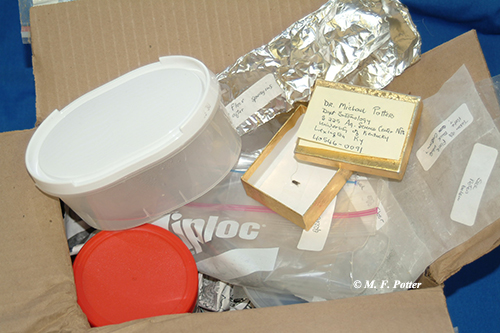
Fig. 13a: Delusions of parasitosis patients often submit numerous samples for identification.
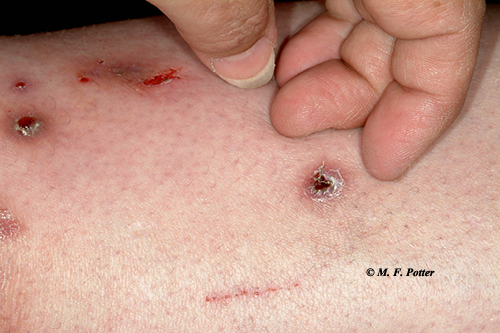
Fig. 13b: Self-inflicted scratches and scarring may also be evident.
While these cases may seem bizarre, they are tragically real to the patient. Sufferers often are convinced that spraying insecticides will fix the problem — but treatment of the disorder lies outside the realm of pest control. Such cases should be referred to a dermatologist or mental health professional. Unfortunately, it may be difficult to convince affected individuals to seek professional help, except perhaps by involving another family member.
SUMMARY. There is no simple way to diagnose ‘mystery bite’ complaints. Oftentimes, the itching or irritation has nothing to do with insects or mites and cannot be solved by pest control. Approaching each case in a thoughtful, methodical manner will increase the chances of finding a solution. Such sensations are real to the client, and should be addressed with care and concern.
Revised 9/7/2018
CAUTION: Some pesticides mentioned in this publication may not be legal in your area of the country. If in doubt, please consult your local cooperative extension service or regulatory agency. Furthermore, ALWAYS READ AND FOLLOW LABEL DIRECTIONS FOR THE PRODUCT YOU ARE USING.
Please note that content and photos in this publication are copyrighted material and may not be copied or downloaded without permission of the Department of Entomology, University of Kentucky.
MYSTERY BITE QUESTIONNAIRE
- Area(s) within building where bites are occurring _______________________________
- Number of people with symptoms________
-
When did problem first occur? ______________ Frequency of occurrence ___________
Time of day ________________
-
Description of symptoms (welts, rash, itching, etc.) _____________________________
Area(s) of body affected ___________________________________
-
Has patient seen a doctor (e.g., dermatologist)? If so, what was the diagnosis?
__________________________________________________________________
-
Have insects or mites suspected of causing irritation been seen or captured? _______
If so, were they identified by an entomologist or other competent professional? ______
- Are pets present (dog, cat, parakeet, gerbil, hamster, mice, etc.)? ______________
-
Has there been infestation of birds, bats, rodents, raccoons, squirrels, etc. within past
6 months? ________ If so, where in the building? ____________________________
- Has there been recent repair work in the building? (heating/cooling, ceiling, new carpet, paint,
furnishings)? ____________________________
- Have affected persons been outdoors hiking, camping, gardening or leaf raking?
- Have affected persons been traveling, staying in hotels, or acquired used beds or furnishings?
_________________________________
- Is there any evidence of non-pest irritants? _____________________________
